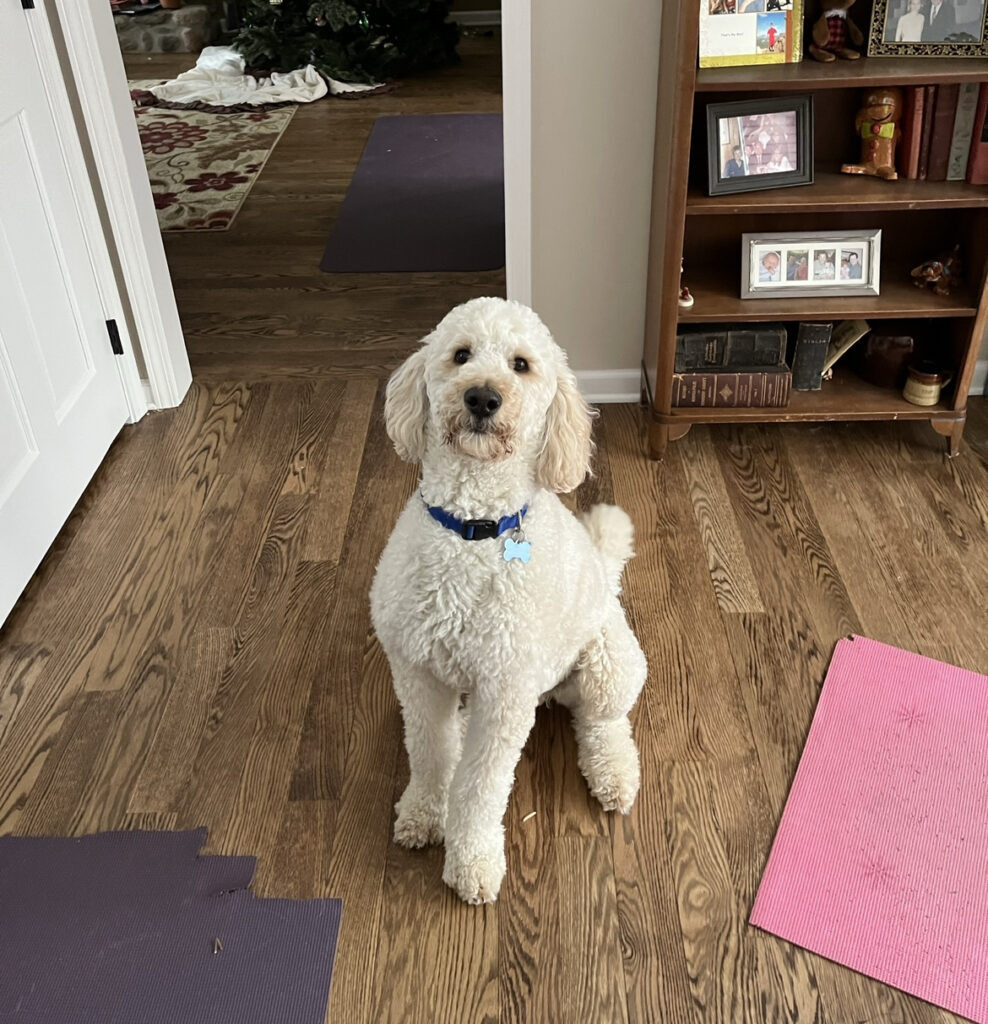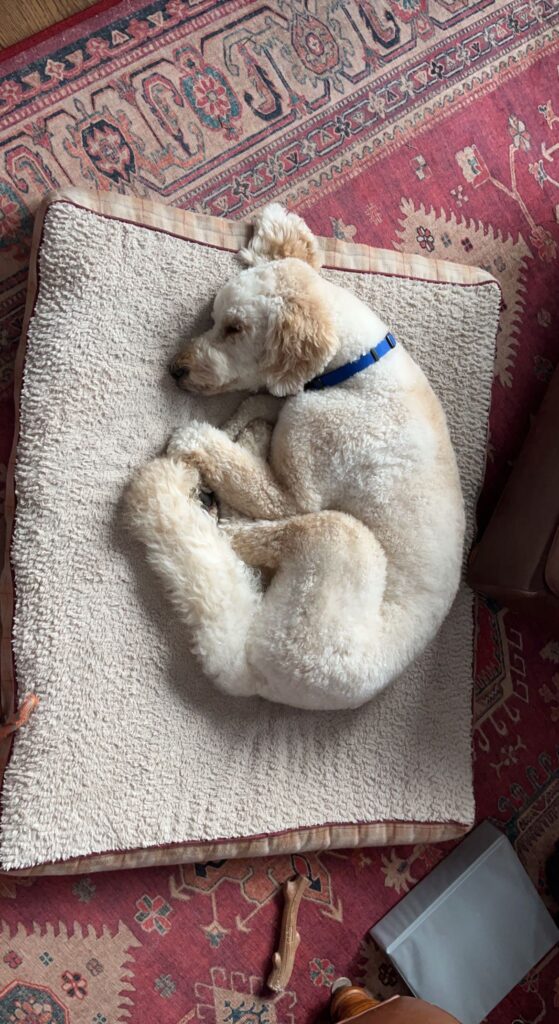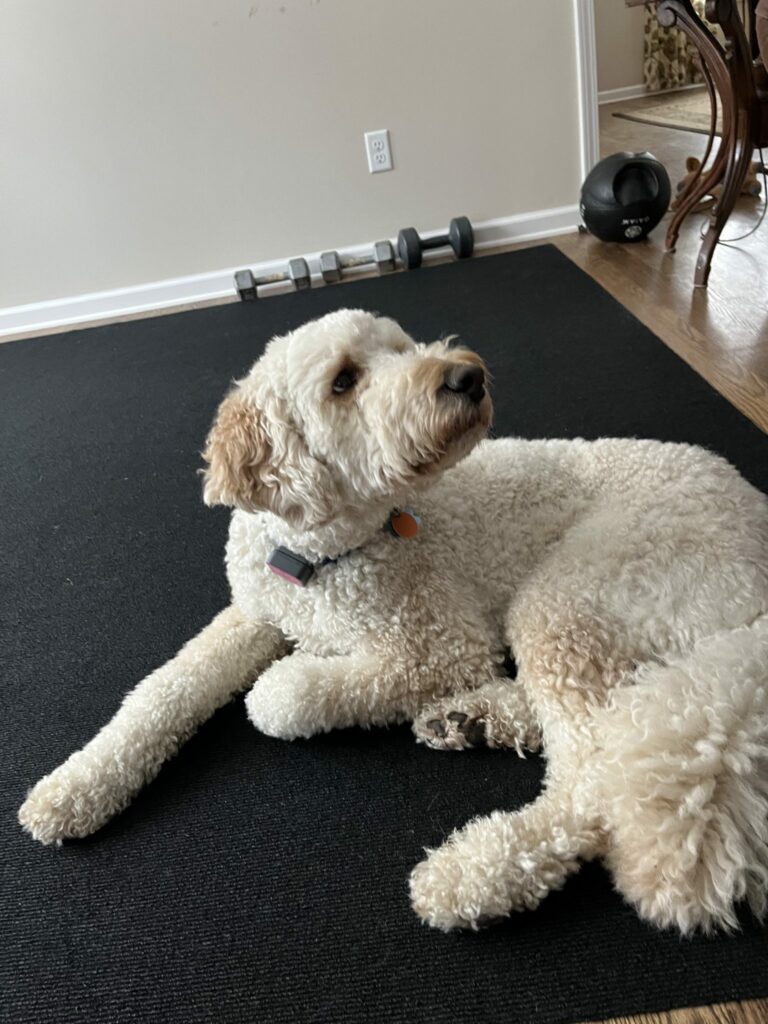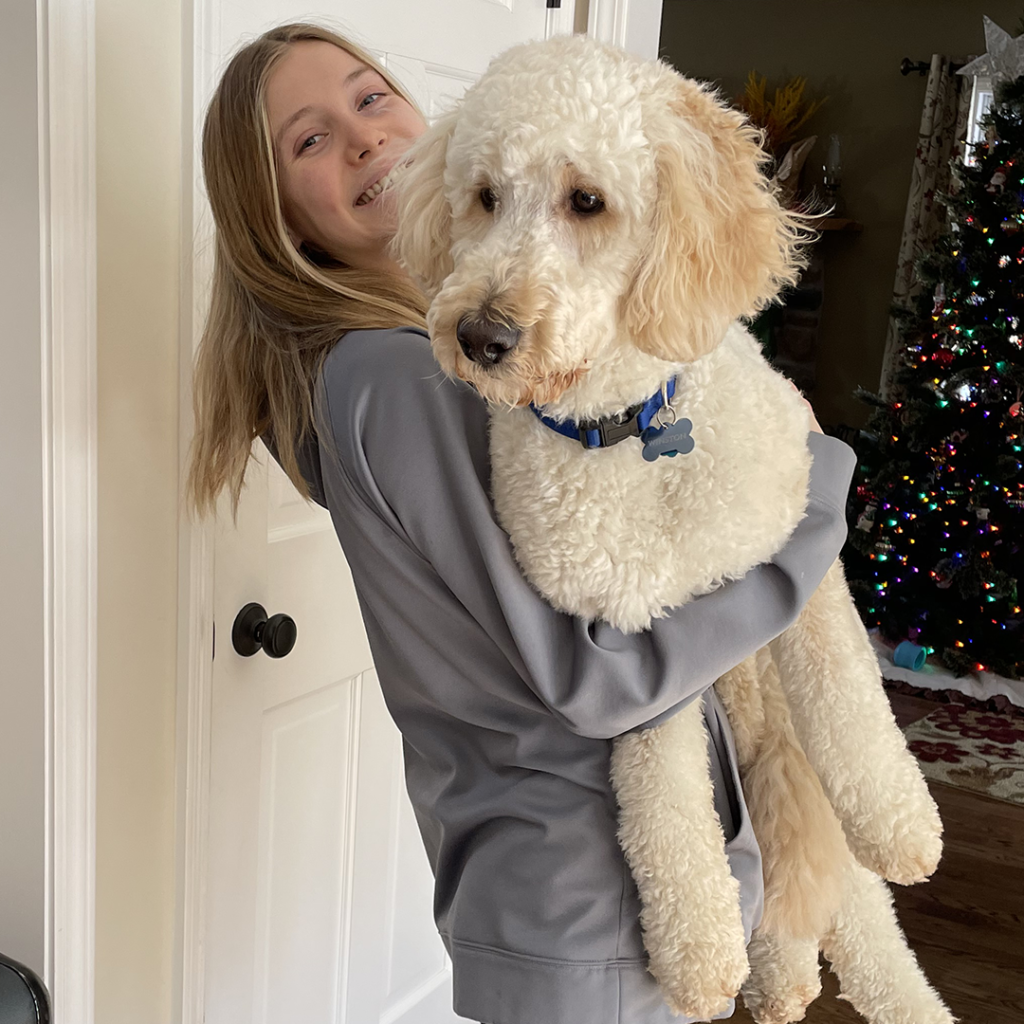Poodles are known as one of the most iconic and beloved dog breeds in the world, with a reputation for being intelligent, loyal, and fluffy. But what about their size? People often wonder: when do poodles stop growing? The answer to this question depends on several factors including breed type and nutrition – but it’s an important one to know if you’re considering adding a poodle puppy to your family. So let’s take a look at how big these fuzzy little dogs can get!
Poodles usually stop growing by the time they are 18-24 months old. The average size for a poodle is between 10 and 15 inches tall and can range from 4 to 70 pounds, depending on the breed. While some breeds may reach their full height earlier than others, all poodles should be fully grown by two years of age.
Average Poodle Size

Poodles come in a variety of sizes, from Toy Poodles averaging 5-10 pounds to Standard Poodles typically weighing 45-70 pounds. Miniature Poodles are the most popular size due to their versatility and average adult weight can range between 15-17 pounds.
When it comes to determining the average poodle size, breeders consider many factors such as age, health, and diet.
Generally speaking, most poodle breeds reach maturity within two years of life but may continue to fill out slightly beyond that age until they reach full physical maturity around four or five years old. During this time frame is when they will usually be at their heaviest or tallest depending on the breed type.
In order for a poodle to achieve its maximum potential size and overall healthiest shape requires proper nutrition throughout its lifetime.
This means providing quality meals with plenty of protein together with vitamins and minerals essential for optimal growth… all while being mindful not overfeed your pup as obesity can cause serious long term health issues down the line. Additionally ensuring adequate exercise levels also help keep them trim and fit during adulthood as well as preventing boredom related behaviors which could arise from lack of stimulation during adolescence stages.
When Do Toy Poodles Stop Growing?

Toy Poodles are unique members of the Poodle family. They tend to reach maturity faster and stay smaller than their Standard and Miniature counterparts. As a result, they also stop growing much sooner than other breeds.
Once Toy Poodles reach around 9 months old, they have usually finished growing in size and height. However, it is important to note that even after this point Toy Poodles may continue to gain weight as they age and fill out more muscularly – but not significantly so.
When it comes to determining when your Toy Poodle has stopped growing, there are some physical characteristics you can look for. At full maturity, a Toy Poodle should stand no taller than 10 inches at the shoulder with adult males typically weighing between 4-6 pounds and females between 3-4 pounds (although these measurements do vary slightly by region). Also keep an eye on how quickly your pup’s nails grow; if they seem to be getting longer twice or three times per month then chances are he has finished his growth spurt!
When Do Miniature Poodles Stop Growing?

Miniature Poodles are one of the smallest breeds in the Poodle family, usually weighing between 10-15 pounds and standing at 12-15 inches tall. While they may look like they’re done growing when they reach adulthood around a year old, this is not always the case. Miniature Poodles can continue to grow until their second birthday or beyond, depending on their individual growth rate and lifestyle factors.
Since Miniature Poodles have such a small frame, it is important for them to be fed proportionately to ensure that their diet does not interfere with proper growth rates.
A balanced diet will help keep them healthy and fit throughout all stages of life but should also take into account any medical conditions that could affect their growth process. Proper exercise is also essential for promoting healthy muscle development as well as overall physical activity levels during all stages of life.
In addition to following an appropriate diet and lifestyle regimen, regular veterinary checkups are key for monitoring your Miniature Poodle’s health including any potential issues with skeletal or muscular development which could impact its overall height and weight gain at different ages.
Ultimately a combination of these elements will give you the best idea of when your miniature poodle stops growing—which tends to occur anywhere from 18 months up through two years old—so that you can plan appropriately while caring for your pup!
When Do Standard Poodles Stop Growing?
Standard Poodles are a type of large breed dog that usually stops growing between 12 and 15 months of age. However, they may continue to gain weight or bulk up after this time. With proper nutrition and exercise, your Standard Poodle can reach its full potential.
Generally speaking, the growth process for all poodles is similar so you can expect your puppy’s growth rate to slow down by the time it reaches 6 – 8 months old. At this point in their development, they will have reached most of their adult size but not all of their height or body mass yet. They still need plenty of rest and regular meals balanced with activity to ensure healthy development during this stage of growth.
It’s important to note that some individual poodles stop growing earlier than others due to genetics as well as diet, environment and other factors. Therefore, it’s best not to put an exact age on when your pup will be finished growing since each pup progresses differently over time. Instead stay focused on providing them with the care needed for strong physical and mental health throughout life!
Factors That Affect Growth
When it comes to understanding a poodle’s growth, there are several factors that need to be taken into consideration.
The most important factor is the breed of the poodle, as different breeds have different size standards and growth patterns. For example, Toy Poodles typically reach their full adult size by 8 months of age while Standard Poodles usually keep growing until they are between 18 months and 2 years old.
Another important factor is nutrition. Proper nutrition helps ensure optimal health and provides essential nutrients for healthy growth and development for puppies as well as adults. Feeding a balanced diet with high-quality ingredients will help support your pet’s overall health which can also affect how quickly or slowly they grow.
Environmental conditions can also play an influential role in determining when a poodle stops growing… warm climates tend to promote faster physical development than cooler climates do due to higher energy requirements from the body in order to stay warm, resulting in shorter legs and wider bodies among other things for some breeds such as Toy Poodles whereas those living in colder areas may develop longer limbs as their bodies require more insulation against the cold temperatures. Stress can also impede proper development so providing a safe environment with plenty of love and attention is key!
Spaying & Neutering Impact On Growth
Spaying and neutering can have a major impact on the growth of poodles. Neutering is typically recommended for male puppies that are at least 6 months old, whereas spaying should be done when female puppies reach 8 months. Generally speaking, these procedures will slow down their physical maturity and affect both height and weight development.
Neutered males may grow slightly shorter compared to those who were not neutered, while females may remain taller if they were spayed after reaching sexual maturity.
However, it’s important to note that the effect of this procedure on growth depends on the age at which it was performed; earlier interventions tend to cause more significant changes in size than later ones do. Spaying or neutering does not significantly change muscle tone or coat texture, these traits are largely determined by genetics rather than surgery.
It’s worth noting that although spaying or neutering can influence the general shape of your poodle, any potential effects vary depending on timing and individual genetics. Therefore owners should consider consulting their vet before making any decision about when or if to neuter/spay their pet so as not to risk stunting its growth too much due to early intervention
How To Monitor Your Dog’s Growth
As a dog owner, it’s important to monitor your pup’s growth to ensure they are healthy and developing properly.
To do this, you should measure your poodle’s weight every month until they reach adulthood. You can also use their collar size as an indication of how much they have grown since getting them.
Additionally, keeping track of their diet and exercise routine is essential for monitoring their overall health and development.
Make sure to bring your pup in for regular checkups with the vet so that any potential issues can be identified early on. During these visits, the vet will do a physical examination which includes measuring height and body length along with monitoring other vital signs such as heart rate or temperature. The vet may advise certain supplements if necessary for balanced diet or provide additional guidance about what type of food is best suited for your pet’s age/stage in life.
If you’re concerned that something isn’t quite right with your pup’s growth then consult with the veterinarian immediately – they will know best how to diagnose and provide treatment accordingly. There are a variety of factors that affect poodles’ growth rate – genetics, nutrition level, activity level etc., so understanding these elements helps when trying to establish healthy habits throughout their lifetime!

